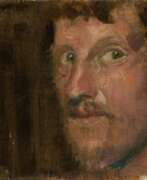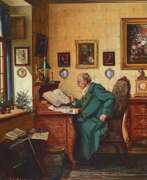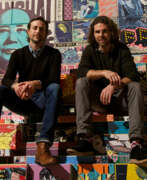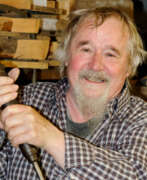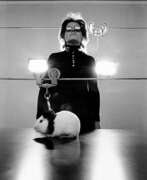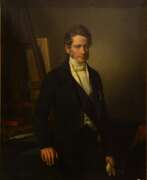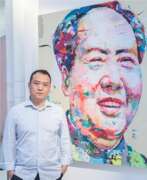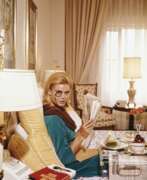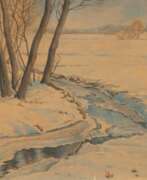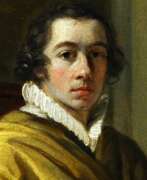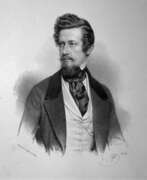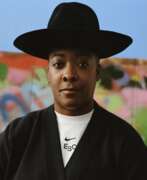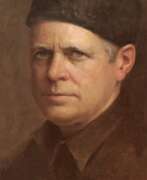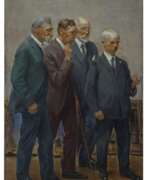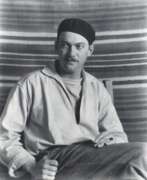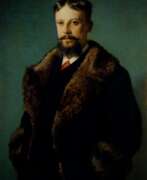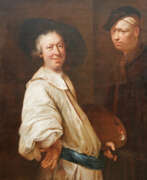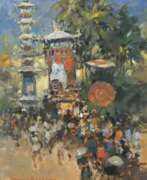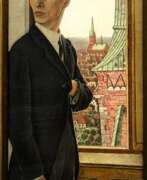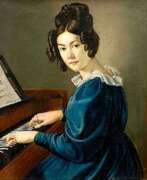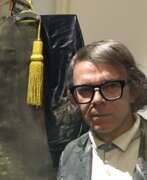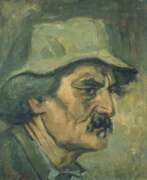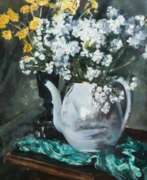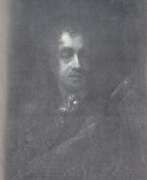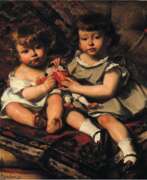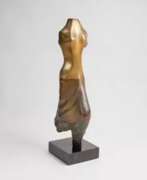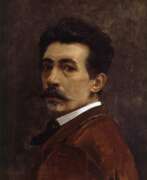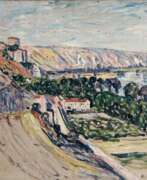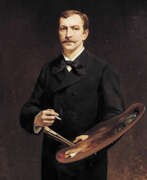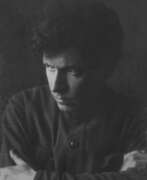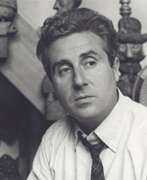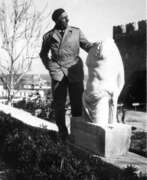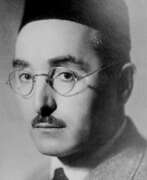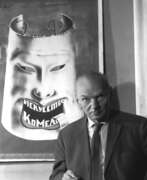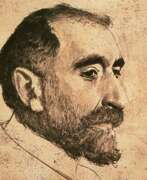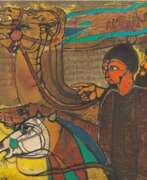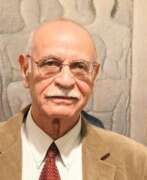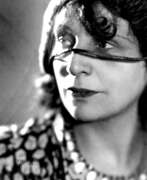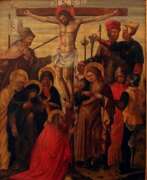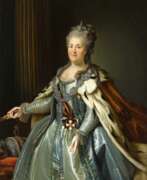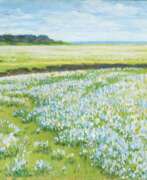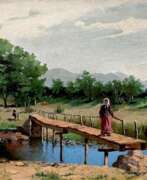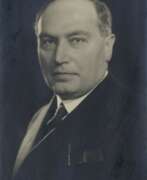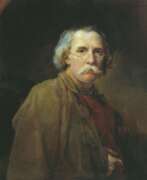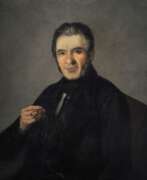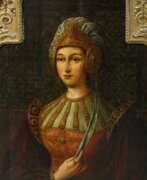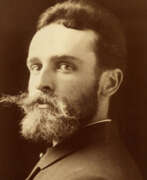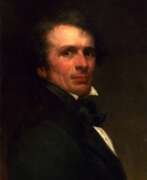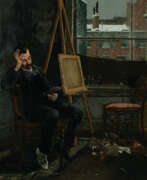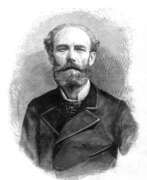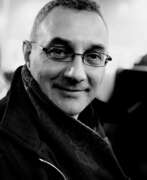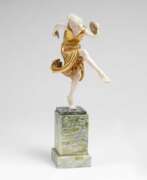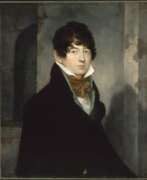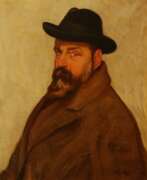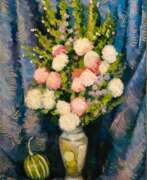Portrait
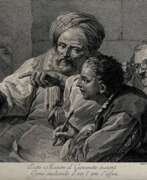

Antonio Capellan was an Italian engraver, active in a Neoclassical style. He trained with Joseph Wagner. Capellan is best known for making engraved copies of masterworks of the Italian Renaissance found in private collections, which were published in Gavin Hamilton's work, Schola Italica Picturae. He also engraved a series of portraits of cardinals titled "Calcographia R.C.A. apud Pedem Marmoreum". In 1759, he engraved portraits of Michelangelo and Giorgio Vasari for a volume of the life of Vasari, curated by Bottari.
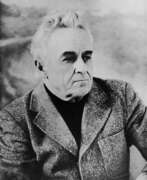

Alexander Grigorievich Maksymenko (Russian: Александр Григорьевич Максименко) was a Soviet and Ukrainian painter of the second half of the twentieth and early twenty-first centuries. He is known as a painter, graphic artist, watercolorist, and art historian.
Alexander Maksymenko worked in the genres of still life, landscape, portrait, as well as in genre painting. His genre works cover themes of collective farm life, including "Masters of the Land" and "Innovators of Collective Farm Fields". For the latter work he received the Stalin Prize. The master actively participated in exhibitions in Ukraine and abroad. His works are in the National Art Museum of Ukraine, the Museum of the History of Ukraine in World War II, as well as in other art museums and private collections.
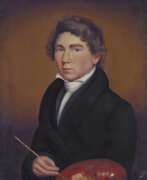

William Matthew Prior was an American folk artist known for his portraits, particularly of families and children.
About 1,500 portraits are attributed to Prior. His works are in many museums and institutions around the United States including the Harvard Art Museums, Museum of Fine Arts, Boston, and the National Gallery of Art.


Herbert Ritts Jr. was an American fashion photographer and director known for his photographs of celebrities, models, and other cultural figures throughout the 1980s and 1990s. His work concentrated on black and white photography and portraits, often in the style of classical Greek sculpture, which emphasized the human shape.
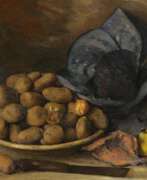

Wilhelm Schmurr was a German painter and co-founder of the Sonderbund in Düsseldorf. His style, characterized by clear expression, was influenced by the Pre-Raphaelites, Symbolists, and Realists. He received several awards and medals for his work and was a member of various art associations. Schmurr taught at the Kunstakademie Düsseldorf and inspired by the farmers after the war, he created scenes of simple life and still lifes. He was awarded the Karl-Ernst-Osthaus-Preis and the Bundesverdienstkreuz erster Klasse and became an honorary member of various artist associations.
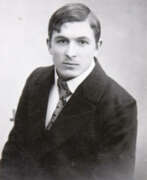

Wäinö Waldemar Aaltonen was a Finnish artist and sculptor, celebrated for his contributions to the cultural landscape of Finland, particularly during the early years of the nation's independence. Born in 1894, Aaltonen's works are distinguished by their nationalist themes and monumental scale, often reflecting the spirit and identity of Finland. His artistic journey was notably influenced by a trip to Italy in 1923, where he encountered cubist and futurist art, elements of which he integrated into his own work.
Aaltonen's sculptures are key features in Finland's public spaces, including the well-known statues in the House of Parliament and numerous works in Turku, such as the "Lily of Turku" and a statue of the runner Paavo Nurmi. His mastery is also showcased at the Wäinö Aaltonen Museum of Art in Turku, which houses a significant collection of his sculptures, paintings, and drawings. This museum not only celebrates his legacy but also serves as a central repository for his extensive works, donated by Aaltonen himself.
For those interested in exploring Aaltonen's work and the impact of Finnish sculpture, a visit to the Wäinö Aaltonen Museum of Art is invaluable. The museum provides a comprehensive view of his artistic evolution and contributions to Finnish art. For updates on exhibitions and events related to Wäinö Aaltonen, consider signing up for notifications through the museum's mailing list, ensuring you stay informed about new insights and offerings related to this pivotal artist.
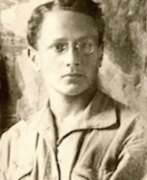

Pavel Efimovich Ab (Russian: Павел Ефимович Аб) was a Russian Soviet artist, born on November 22, 1902, in Orel. He is renowned for his contributions to painting and graphic arts, having studied under notable mentors such as Kuzma Petrov-Vodkin and A. I. Savinov at the VKhUTEIN in Leningrad during the years 1923 to 1929.
Ab's career was deeply influenced by his experiences during the Great Patriotic War, where he served in the 21st Rifle Division of the NKVD on the Leningrad Front. His war-time sketches of city defenders and subsequent military honors played a significant role in his artistic expression. After the war, he continued to actively participate in the creative community, producing notable works like "Pavlov in Koltushi" and "Speech of V. I. Lenin at the Admiralty Shipyards".
His artworks, which often depicted military and historical themes, are preserved in various museums and private collections in Russia and abroad. Ab's commitment to the Leningrad Union of Artists until his death in 1974 ensured that his legacy would influence future generations of artists.
For enthusiasts and collectors keen on exploring Russian Soviet art, staying updated on exhibitions and sales featuring Pavel Efimovich Ab's works can be enriching. Sign up here for updates related to new product sales and auction events concerning Ab's art.
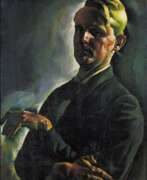

Vilmos Aba-Novák was a distinguished Hungarian artist, celebrated for his unique blend of Expressionism with classical and Renaissance influences. Born in Budapest in 1894, he was deeply influenced by his experiences in the Austro-Hungarian Army during World War I, which later permeated his art. Aba-Novák is best known for his vibrant frescoes and murals that decorate several public buildings in Hungary, including churches and civic buildings in Szeged and Budapest.
His works, characterized by dynamic compositions and a bold use of color, often depicted village fairs, circuses, and everyday Hungarian life, bringing an almost fantastical quality to these scenes. His remarkable ability to combine traditional subjects with modern artistic elements made his work a significant contribution to modern Hungarian art. Aba-Novák's art was not only appreciated in his homeland but also internationally, earning him major awards like the Grand Prize at the Paris World Exhibition in 1937 and at the 1940 Venice Biennale.
For art collectors and enthusiasts interested in exploring or purchasing Vilmos Aba-Novák's works, staying informed about upcoming sales and exhibitions is crucial. Signing up for updates can provide valuable insights into available pieces and auction events. To keep abreast of such opportunities, consider registering for newsletters or alerts specifically tailored to Aba-Novák's art. This will ensure you don't miss out on acquiring a piece of this unique artistic heritage.
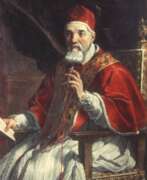

Guido Ubaldo Abbatini was an Italian Baroque painter, celebrated for his fresco works and significant contributions during the artistic fervor of 17th-century Rome. Born around 1600 in Città di Castello, Umbria, and later active in Rome and Usigni, Abbatini's career was marked by his apprenticeships under prominent artists such as Giuseppe Cesari and Pietro da Cortona. He is also noted for his association with Gian Lorenzo Bernini, under whom he worked on notable projects like the frescoes in the Cornaro Chapel.
Abbatini's works are characterized by their dynamic compositions and vibrant use of color, which were typical of the Baroque movement's dramatic style. His artistic contributions extend to several churches in Rome, where his frescoes continue to be admired for their artistic and historical significance.
For art collectors and enthusiasts interested in Baroque art, Guido Ubaldo Abbatini's works represent a pivotal chapter in Italian art history. His paintings not only reflect the rich cultural heritage of the era but also showcase the evolution of Baroque artistic expressions in Italy.
To stay updated on exhibitions and sales related to Guido Ubaldo Abbatini's works, consider subscribing to updates. This service will keep you informed about new discoveries and auction events, enhancing your collection and appreciation of Baroque art.
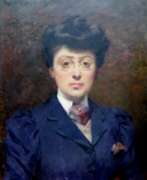

Louise Abbéma was a French painter, sculptor, and designer, celebrated for her work during the Belle Époque. Born in Étampes in 1853 into an affluent Parisian family, she became well known for her portraits, particularly of the famous actress Sarah Bernhardt, and for decorative panels commissioned for various public buildings in Paris and the Palace of the Governor in Dakar, Senegal.
Abbéma's art often depicted the upper echelons of French society and reflected the Impressionist style through her light and rapid brushstrokes. She was also notable for her involvement in the women's movement, where she contributed to the emerging image of the 'New Woman' by portraying androgynous figures and themes of intellectualism and freedom.
Among her many honors, Abbéma was awarded the Palme Academiques in 1887, nominated as the Official Painter of the Third Republic, and in 1906, she became a Chevalier of the Legion of Honour. Her works, such as "Lunch in the Greenhouse" and "Portrait of Sarah Bernhardt," have seen a resurgence in popularity as the contribution of women to historical art gains more recognition.
For those interested in the evocative and historically rich artworks of Louise Abbéma, consider subscribing to our updates. We'll keep you informed about new sales, auctions, and exhibitions featuring Abbéma's work, ensuring you're always connected to the latest offerings in the art and antique collectors' sphere.
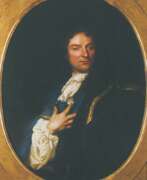

Filippo Abbiati was an Italian painter, renowned for his contribution to the Baroque period. Born in Milan in 1640, Abbiati's training under Carlo Francesco Nuvolone and Antonio Busca honed his skills, leading him to develop a distinct style characterized by fluid touch and luminous foundations. His work was heavily influenced by early seventeenth-century Lombard painting and later, the Roman Baroque and Venetian painting.
Abbiati's career was predominantly based in Milan, where he produced numerous significant religious and historical paintings. Notable works include the altarpiece of the Preaching of St. John the Baptist for the Sanctuary of the Beata Vergine dei Miracoli in Saronno and the extensive frescoes in the Milanese church of Sant'Alessandro. His masterpieces are celebrated for their dynamic composition and expressive intensity, marking a transition toward the Rococo movement.
Though details about his later years remain sparse, Abbiati's legacy lives on through his influential frescoes and the mentorship of notable students like Alessandro Magnasco. His works can still be admired in places like the Pinacoteca di Brera in Milan and the Biblioteca Ambrosiana.
For collectors and enthusiasts looking to explore the depth of Italian Baroque, Filippo Abbiati's work offers a rich narrative woven through the tapestry of art history. Sign up for updates on auctions and new discoveries related to Filippo Abbiati, ensuring you stay informed about opportunities to own a piece of this illustrious artist's legacy.
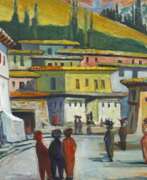

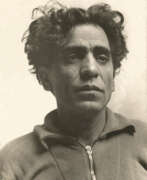

Jussuf Abbo, originally Jussuff Abbu, was a Palestinian-Jewish artist active mainly in Germany.
In 1937 in Germany his work had been branded as "Degenerate Art" and removed from all public museums. Much of the work removed was later destroyed by the Nazi regime.


Lemuel Francis Abbott was an English portrait painter. His most famous work is the portrait of Nelson, exhibited at the residence of the British Prime Minister.
During his artistic life Abbott created many portraits of famous people of the 18th century - naval officers, literati, officials, ladies of the world. He was one of the first to portray golfers.
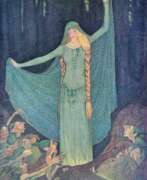

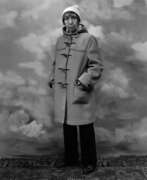

Berenice Alice Abbott was an American photographer best known for her portraits of between-the-wars 20th century cultural figures, New York City photographs of architecture and urban design of the 1930s, and science interpretation in the 1940s to 1960s.
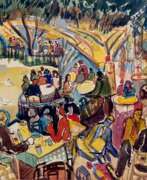

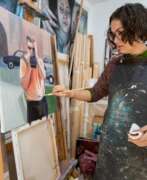

Nuria Farre Abejon is a Spanish hyperrealist artist living and working in Barcelona, Spain.
Her often hyper-realistic works revolve around issues that concern her as a young woman: anxiety, melancholy, family, memories and identity. At first, Nuria created translucent paintings through which she represented the duality between life and death. Later she explored self-portraiture, and today Nuria tries to explore her present through photographs from her family album, through which she creates interesting visual oil collages.
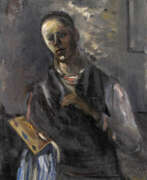

Alfred Aberdam was a Polish painter associated with the School of Paris, known for his participation in the artistic movements of the early 20th century. Born in Lviv, then part of the Austro-Hungarian Empire, Aberdam's journey in the arts began with his studies at the Munich Academy in 1911. His life and work were marked by significant historical events, including imprisonment during World War I and an active period in Poland's art scene before settling in Paris. Aberdam's contributions are remembered through his numerous exhibitions, including solo showcases in Paris, London, and Tel-Aviv, as well as posthumous retrospectives like the one in Geneva's Petit Palais in 1970.
Aberdam's works reflect the cultural dynamism of the School of Paris, capturing a confluence of influences that characterized the European art scene. Despite being somewhat lesser-known, his paintings have been traded at auction, reflecting a continued interest and recognition of his artistic legacy. His art remains an important part of the narrative of Jewish painters in Paris from 1905 to 1939, contributing to our understanding of the era's artistic diversity.
For collectors and experts in art and antiques, Aberdam's work embodies the intricate history and cultural exchanges of the early 20th century European art world. His paintings not only represent his individual talent but also tell the story of the times in which he lived, worked, and created. Understanding Aberdam's art is a journey through the cultural melting pot that was Paris during a pivotal period in modern art history.
For those interested in exploring the legacy and works of Alfred Aberdam further, or seeking to keep abreast of new product sales and auction events related to his work, subscribing for updates is invaluable. Stay informed on the latest developments and opportunities to appreciate or acquire pieces by this notable artist. Subscribe now to ensure you are alerted to new sales and auction events featuring the esteemed Alfred Aberdam.
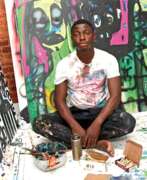

Abdoulaye Diarrassouba, also known as Aboudia, is an American-Ivorian contemporary artist.
Aboudia began his artistic career early and has drawn attention for his expressive and emotional style. His work reflects the complex realities of the city and the experiences of locals during political and social crises. The painter often uses bright colours, rough strokes and abstract shapes to convey the violence, chaos and hope that are present in his subjects' lives.
Aboudia's artistic style mixes elements of graffiti, street art, African folk painting and contemporary art.
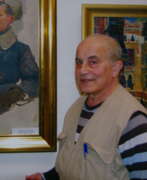

Victor Ashotovich Abramyan (Russian: Виктор Ашотович Абрамян) was a Soviet and Russian artist of the second half of the twentieth and early twenty-first centuries. He is known as a painter, a representative of the Leningrad school.
Victor Abramyan created portraits, landscapes, still lifes and genre paintings. He participated in exhibitions from the early 1970s in Leningrad. Among his famous works are "Blockade everyday life", "Still Life with a Centennial", "Leningrad. 1942. Women on Guard in the besieged city", "Young Guests" and others.
Abramyan's works are in museums and private collections in Russia and many other countries.
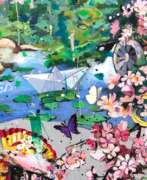

Angelo Accardi is a contemporary Italian artist. He grew up surrounded by both modern and traditional art. Although he studied fine art at the Art Academy of Naples, he never completed his training. Angelo Accardi illustrates surreal visions of everyday life under realistic backdrops of urban and natural landscapes. There is never a single meaning, but a whole story behind each painting. Ironic, striking, and playful, Accardi’s unique perspective and avant-garde style is a result of his diverse inspirations.
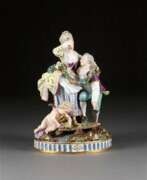

Michel Victor Acier was a French porcelain sculptor and model-maker who worked at the famous Saxon porcelain manufactory in Meissen from 1765 to 1779. With his work in the activities of the manufactory is associated with the period of neoclassicism. Michel-Victor was the maternal great-grandfather of the composer Pyotr Ilyich Tchaikovsky.
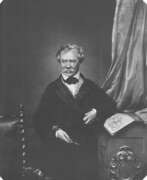

Albrecht Adam was a Bavarian painter of the first half of the 19th century. He is best known for the fact that as a member of Napoleon's Grand Army he took part in the campaign against Russia in 1812 as the official artist of the headquarters of the IV (Italian) Corps. Throughout the campaign, the artist made sketches and drawings, capturing many of the important events of the campaign. Later, many of these sketches became the basis for full-fledged paintings, and to subjects from the Napoleonic wars, which he witnessed, Adam addressed until the end of his very long life.
Albrecht Adam was also the author of memoirs, in which he described in detail the Battle of Borodino and a number of other key events of the War of 1812.
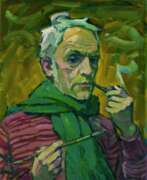

Heinrich Emil Adametz was a German expressionist painter.
Adametz studied in Hamburg and at the Academy of Fine Arts in Stuttgart. Influenced by Expressionism, he painted portraits, seascapes with ships, and still lifes. Later, the events of World War II took such a heavy toll on the artist's family that he was unable to recover from them for the rest of his life.
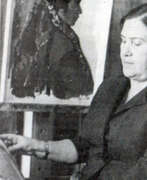

Yevgeniya Mikhailovna Adamova (Russian: Евгения Михайловна Адамова) was a Soviet artist of the second half of the twentieth century. She is known as a painter, People's Artist of the Turkmen SSR.
Yevgeniya Adamova, who moved to Turkmenistan from Ukraine in her youth, was educated at the Ashgabat Art School. During the Great Patriotic War, she creatively expressed herself as a poster artist in the TurkmenTAG agency. The artist created thematic paintings dedicated to the life of the Turkmen people and portraits. She held the post of deputy chairman of the Union of Artists of Turkmenistan.
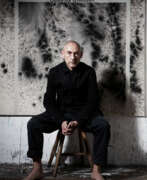

Hans Peter Adamski is a German painter and graphic artist who lives and works in Berlin and Dresden.
He studied at the Dusseldorf Academy of Art and served as professor and dean of the Dresden University of Fine Arts. Adamski is one of the most important representatives of the Neue Wilden ("New Wilden") movement of the 1980s. In addition to painting, he works in drawing, sculpture, paper, fabric and plaster.
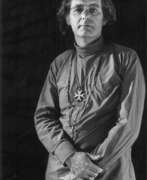

Marc Adrian is an Austrian conceptual artist and filmmaker.
Adrian studied sculpture at the Vienna Academy of Fine Arts, from 1953 he became interested in cinema, kinetics, rhythmic interference, problems of optical structures, etc. Adrian is considered one of the pioneers of film-oriented media art. He specialized in kinetic objects, anti-cinema and computer art.
Marc Adrian has taught at various universities in Europe and lectured to American students.
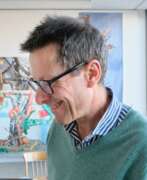

Urs Aeschbach is a Swiss media artist working in various techniques. Nature is always a pictorial theme in Urs Aeschbach's paintings. Her main characters are mushrooms, woody plants, animals, jellyfish, as well as dogs and horses. The artist's paintings are inspired by photographs and illustrations. In addition to paintings, Eschbach creates art and construction projects, video works, as well as constructions and installations.
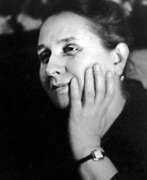

Taisia Kirillovna Afonina (Russian: Таисия Кирилловна Афонина) was a Soviet artist of the second half of the twentieth century. She is known as a painter, graphic artist, representative of the Leningrad school.
Taisia Afonina participated in exhibitions since 1940, creating portraits, landscapes, genre compositions, still lifes and etudes. At the beginning of her career she was interested in military subjects, and then delved into the genre of portraiture and lyrical landscape. Her style is characterized by tonal painting, the rendering of light and air environments and subtle coloristic combinations. In the 1980s she preferred the watercolor technique, painting flowers such as roses, daisies and tulips. Her works are in museums and private collections in Russia and other countries.
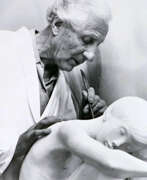

Rudolf Alexander Agricola was a German sculptor. In the 1930s he studied with Gerhard Marcks in Halle and in Stedel with Richard Scheibe. In 1937 he followed Richard Scheibe to Berlin as a graduate student. He worked there until the end of the Second World War and received several awards.
Rudolf Agricola is known for his bronze sculptures with full figures and nudes. His work was influenced by Georg Kolbe and Aristide Maillol.
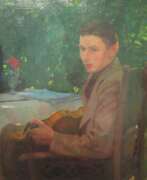

Friedrich Ahlers-Hestermann was a German painter and art writer from Hamburg. He was a member of the Hamburgische Künstlerclub of 1897, as well as of the Hamburg artist's workshop of 1832 and pupil of the Académie Matisse in Paris. After the First World War, he was a co-founder of the Hamburg Secession.
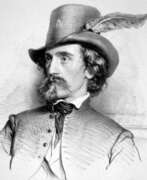

Joseph Matthäus Aigner was an Austrian portrait painter, who studied under Friedrich von Amerling and Carl Rahl. He painted portraits of Franz Joseph I of Austria and his wife Elizabeth, Franz Grillparzer, Friedrich Halm, Nikolaus Lenau, and Maximilian I of Mexico.
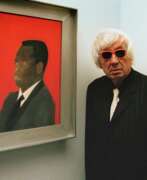

John Ronald Craigie Aitchison was a Scottish painter. He was best known for his many paintings of the Crucifixion, one of which hangs behind the altar in the chapter house of Liverpool Cathedral, Italian landscapes, and portraits (mainly of black men, or of dogs). His simple style with bright, childlike colours defied description, and was compared to the Scottish Colourists, primitivists or naive artists, although Brian Sewell dismissed him as "a painter of too considered trifles".
His career-long fascination with the crucifixion was triggered by a visit to see Salvador Dalí's Christ of St John of the Cross in 1951 after it was acquired by the Kelvingrove Gallery.
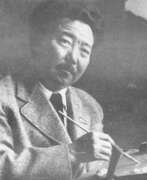

Gapar Aitievich Aitiev (Russian: Гапар Айтиевич Айтиев), a pioneering figure in Soviet Kyrgyz art, was born in 1912 and became a cornerstone of Kyrgyz cultural heritage through his impactful contributions as an artist and educator. Aitiev's journey in art began at the Moscow Art School in Memory of 1905, where he studied under N. P. Krymov between 1935 and 1938, laying the groundwork for his illustrious career. His profound connection to his Kyrgyz roots was reflected in his artwork, characterized by epic, poetic landscapes of Kyrgyzstan, such as "Midday on Issyk Kul" (1954), and detailed portraits like the "Gallery of portraits of contemporaries" (1979). Aitiev's contributions to the art world earned him the prestigious titles of People’s Artist of the USSR and Hero of Socialist Labor, marking his influence on Soviet and Kyrgyz art history.
The Gapar Aitiev Kyrgyz National Museum of Fine Arts, named in his honor, stands as a testament to his legacy, showcasing not only his work but also a broad spectrum of Kyrgyz and Russian art, spanning from traditional Kyrgyz artifacts to contemporary works post-independence. This museum, alongside the Gapar Aitiev Memorial Studio Museum in Bishkek, provides insight into Aitiev's life, offering a personal glance at his workspaces and the art that filled his surroundings. These institutions preserve and celebrate Aitiev's dedication to portraying the tranquil beauty of Kyrgyz landscapes and the spirit of its people, making his work an integral part of Kyrgyz national identity.
For those interested in the rich tapestry of Central Asian art, visiting these museums in Bishkek is a journey through the heart of Kyrgyz culture and history, brought alive by Aitiev's artistic vision. His work not only captures the essence of Kyrgyzstan's landscapes and people but also serves as a bridge between the traditional and the modern, embodying the nation's cultural evolution.
To stay updated on exhibitions and events celebrating Gapar Aitievich Aitiev's legacy and to explore more about his contributions to art and culture, consider signing up for updates. This subscription will keep you informed about new product sales and auction events dedicated to Aitiev's work, ensuring that enthusiasts and collectors alike remain connected to the vibrant world of Kyrgyz art.
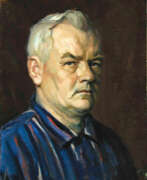

Ivan Osipovich Akhremchik (Russian: Ива́н О́сипович Ахре́мчик) was a twentieth-century Belarusian Soviet artist. He is known as a painter and teacher.
Ivan Akhremchik worked in the genres of portrait, thematic painting, landscape and monumental art. He was one of the first Belarusian artists turned in his work to the theme of the establishment of Soviet power and socialist construction in Belarus. As a muralist, the artist participated in the creation of several pictorial panels for exhibitions and cultural institutions of Belarus.
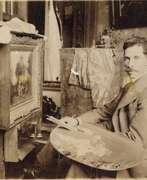

Johannes Evert Hendrik Akkeringa was part of the second generation of the Hague School painters. Akkeringa is primarily known for his paintings and watercolours of women and playing children at the beach, women mending nets and intimate tea-time conversations.


Vladimir Ivanovich Akulov (Russian: Владимир Иванович Акулов) is a Soviet and contemporary Belarusian artist. He is known as a painter, graphic artist and teacher, a representative of the second wave of Belarusian avant-garde.
Vladimir Akulov in his work has developed a unique style under the influence of expressionism, cubism, primitivism, fauvism. He is a master of portrait, landscape, still life, compositions with symbolic and allegorical subjects, illustrations of literary works. During his career the artist created several cycles of portraits, including those of famous people.
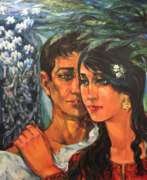

Tamam Al-Akhal is a Palestinian artist and educator living in Jordan. She studied at the Fine Arts College in Cairo. From 1957 to 1960, she taught art at the Makassed Girls College in Beirut. In 1959, she married Ismail Shammout. Al-Akhal has exhibited in Egypt, Lebanon, Jerusalem, Jordan, the United States, Kuwait, England, China, Morocco, Berlin, Paris, Rome, and Vienna. She gave a series of lectures at the Jordan National Gallery of Fine Arts in 2009. Her art appeared on more than a dozen covers of Palestinian Affairs, a magazine published by the Palestine Liberation Organization. She was also head of the PLO's Arts and Heritage section. With her husband, she painted a series of large murals known as "Palestine: The Exodus and the Odyssey."
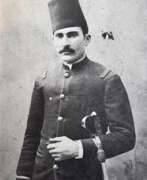

Abdul Qadir Al Rassam was an Iraqi painter of the first half of the twentieth century. He is known as a painter and graphic artist and is considered the founder of modern Iraqi painting.
Al Rassam, a military officer by training, studied drawing at the Military College in Istanbul. Returning to Iraq, he created landscapes, portraits and murals. His work is characterized by historical and ethnographic accuracy. The master, according to critics, contributed to the influence of the European academic school on the Iraqi art scene.
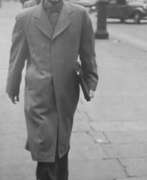

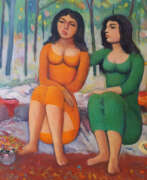

Ismail Al-Sheikhly is a contemporary Iraqui artist. He belonged to one of the first art groups to appear in Iraq, 'La Societe Primitive', founded in 1950. The group later changed its name to 'The Pioneers' and kept it into the 1970s. Some of his works are influenced by Cubism, a movement which grew in popularity throughout the 1950s, and was the preferred artistic style of one of Al-Sheikhly's important contemporaries, Hafiz Drubi. Al Sheikhly’s early works are inspired by the Iraqi village life, though his later works are more focused on abstracted colour combinations and obscured backgrounds. Women feature highly as a central theme in his work. Painted in groups quite often, Al Sheikhly’s women are streamlined with oval faces and generic bodies and seem to always be in states of coming and going, whether that be to the mosque, to the souks, or to do some domestic task.


Craig Alan is an American artist whose work displays a technical sophistication as well as a rich imagination.
After moving with his family to New Orleans, Alan worked as a street artist in his youth, creating portraits. Through his exceptional talent and through his own research, he eventually developed an admirable understanding and sense of textures, compositions and colors. Today, Craig Alan represents a wide range of artistic styles, from book illustration to naturalistic oil painting and his Populus Art.
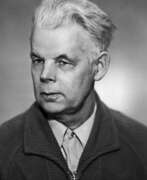

Pyotr Filippovich Alberti (Russian: Пётр Филиппович Альберти) was a Soviet and Russian artist of the second half of the twentieth century. He is known as a painter, a representative of the Leningrad school.
Pyotr Alberti created portraits, landscapes, genre paintings. He actively exhibited since 1951 in Leningrad, demonstrating his works along with the masters of his time. The artist had a broad writing and bright coloring, expressive stroke and used various techniques. He paid special attention to the study of nature. In the late period of his career, he became fond of still life paintings with favorite motifs such as peonies and watermelons.
Alberti's works are preserved in museums and collections around the world.


Balthasar Augustin Albrecht was a German painter of the first half of the 18th century. He is known as a painter who worked in portrait, historical and religious genres.
Albrecht began his career in 1719. He was appointed court painter at the court of the Elector of Bavaria and inspector-custodian of the Picture Gallery in Munich. In addition to portraits and paintings, he created frescoes and altarpieces in churches in Munich and other German cities.
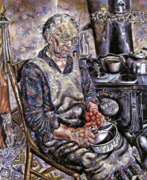

Ivan Albright was an American artist, celebrated for his Magic Realism style that presented an exaggerated and abnormal viewpoint on the mundane. Albright's work is recognized for its meticulous detail and dark, mysterious themes, often exploring the human condition and the passage of time. His technique, involving painstakingly detailed brushwork, sometimes with brushes of a single hair, made his paintings unique and highly valued.
His early and mid-career, from 1925 to 1950, saw the emergence of his mature style, characterized by a baroque formal approach and an uncompromising disclosure of the human condition. This period in his career was marked by controversy and innovation, as seen in works like "The Lineman," which, despite criticism from the public for its portrayal of a lineman as inaccurate and depressing, was more successful with art critics.
Ivan Albright's later career, from 1950 to 1983, focused more on portraiture and self-portraits, reflecting a move away from larger-scale works. His life was filled with travel and personal developments, including marrying Josephine Medill Patterson Reeve in 1946 and settling in Chicago, where he produced numerous sketches and drawings from his travels around the world.
The legacy of Ivan Albright is significant; his detailed portraits and still lifes are unparalleled, recognized for their extraordinary attention to detail and stark lighting. He became known as a one-of-a-kind artist, synthesizing his formal training with experiences from his time as a medical orderly during WWI. His work, including notable pieces like "The Picture of Dorian Gray" and "Into the World There Came a Soul Called Ida," can be found in prestigious collections, including the Art Institute of Chicago, which holds a substantial number of his works.
For collectors and experts in art and antiques interested in the unique and captivating world of Ivan Albright's art, his work offers a deep dive into the complexities of human existence and the fleeting nature of life. To stay updated on sales and auction events related to Ivan Albright's work, signing up for updates is recommended. This subscription ensures you remain informed about opportunities to acquire pieces by this distinguished artist, whose meticulous attention to detail and exploration of the human condition continue to captivate audiences.
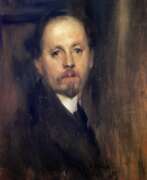

Antonio Ambrogio Alcati was an Italian academic painter, portraitist, master of frescoes and teacher. He studied painting at the Vercelli Institute of Fine Arts and the Brera Academy of Fine Arts.
Ambrogio Alcati's work is also influenced by Impressionism.
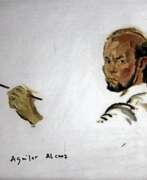

Frederico Aguilar Alcuaz is a Filipino abstract painter, sculptor and ceramist, and master tapestry artist.
He studied painting at the University of the Philippines' School of Fine Arts, then lived and worked both in the Philippines and Spain, and in Brno, Czech Republic, he worked extensively on tapestries.
Alcuaz has earned international acclaim with his vivid abstract works in various genres and techniques, and he has exhibited extensively internationally.
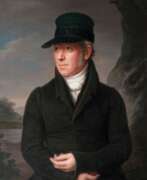

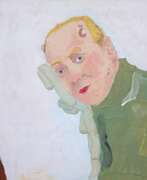

Richard Aldrich is a Brooklyn-based contemporary American conceptual artist and painter who exhibited in the 2010 Whitney Biennial. Aldrich received his BFA degree from the Ohio State University in 1998. Although mostly abstract and casual, Aldrich's paintings also betray a distinctly literary sensibility, even as he targets what he has called the essential "unwordliness of experience." He addresses his own personal history and the way that humans organize information through the formal language of painting, freely citing various aesthetic tropes with humor and irreverence. Aldrich is best known for his loose, abstract compositions, moving freely from gestural mark-making, text-based printing, and cutting the canvas to reveal stretcher bars underneath.
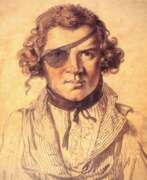

William Alexander was a British painter, illustrator and printmaker.
He studied painting at the Royal Academy and became a very famous artist. In 1792-1794 he accompanied the official embassy to Peking of Lord George Macartney on behalf of the British government, where he documented the visit and made many drawings of the Chinese court. These depict various mandarins, merchants, members of the royal family and members of Chinese society. In 1805, William Alexander published Costume of China, an album illustrated with 48 color prints, which was a success with the public.
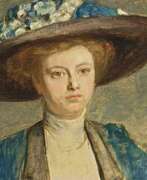

August Allebé was an artist and teacher from the Northern Netherlands. His early paintings were in a romantic style, but in his later work he was an exponent of realism and impressionism. He was a major initiator and promoter of Amsterdam Impressionism, the artist's association St. Lucas, and the movement of the Amsterdamse Joffers. Amsterdam Impressionism – sometimes referred to by art historians as the School of Allebé – was the counterflow to the very strong Hague School in the movement of Dutch Impressionism. As a professor at the Royal Academy of Amsterdam (Rijksakademie van beeldende kunsten) he fostered a cosmopolitan attitude toward art and the promotion and motivation of his students, and provided a significant stimulus to developments in modern art.
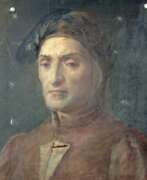

William Herbert Allen was an English landscape watercolour artist whose career spanned more than 50 years from the 1880s to the 1940s. He was invariably referred to as «W. H.» rather than by his given name. He produced several thousand watercolours, chalk and pencil sketches mainly of the landscapes, traditions and people of West Surrey and North-east Hampshire. In addition, he produced scenes of other parts of the British Isles and various parts of continental Europe. These works included commissions in Italy for the Victoria and Albert Museum, Dublin, Edinburgh and Preston museums. He was made a member of the Royal Watercolour Society in 1903 and the Royal Society of British Artists in 1904 and his work was exhibited at the Royal Academy in 1927.
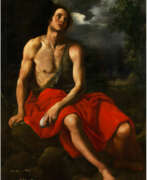

Cristofano Allori was an Italian painter of the late Florentine Mannerist school, painting mostly portraits and religious subjects. Allori received his first lessons in painting from his father, Alessandro Allori, but becoming dissatisfied with the hard anatomical drawing and cold coloring of the latter, he entered the studio of Gregorio Pagani. When still young he became a court portraitist for the Medicis, though many of his commissions were replicas of portraits by his predecessor Bronzino, or had participation by others.[citation needed. His pictures are distinguished by their close adherence to nature and the delicacy and technical perfection of their execution. His most famous work, in his own day and now, is Judith with the Head of Holofernes.
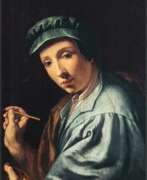

Alessandro Allori, full name Alessandro di Cristofano di Lorenzo del Bronzino Allori, was an Italian painter of the Florentine school of late Mannerism.
Allori was one of the major artists of Florence in the late 16th century. He painted prostrate images and portraits. His son Cristofano Allori (1577-1621) also became an artist.
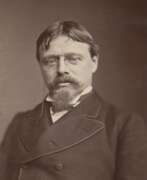

Lawrence Alma-Tadema was a Dutch-British artist renowned for his detailed and romanticized portrayals of ancient civilizations, particularly Rome and Egypt. His meticulous attention to historical accuracy and the lavish representation of marble and luxurious settings distinguished his work. Notably, his fascination with ancient cultures was sparked by his honeymoon visit to Italy and Pompeii, influencing his artistic focus for decades.
Lawrence Alma-Tadema's early work, such as "The Education of the Children of Clovis," showcased his interest in historical subjects and established his reputation. This painting, alongside others like "The Sad Father," demonstrates his commitment to historical detail and narrative depth.
After moving to England due to the Franco-Prussian War and personal reasons, Lawrence Alma-Tadema's career flourished. His works, characterized by their bright palette and refined details, resonated with Victorian audiences, earning him considerable fame and financial success. He was knighted in 1899 and continued to be a pivotal figure in Victorian art, influencing peers and future generations alike.
Lawrence Alma-Tadema's legacy experienced a decline posthumously but saw a resurgence in the 1970s. Today, he is celebrated for his contributions to the Neoclassical and Victorian art movements, with his works featured in prominent collections worldwide, including the Getty Museum and the Tate Gallery.
If you are fascinated by Lawrence Alma-Tadema's artwork and wish to stay updated on sales and auction events related to his works, consider signing up for updates. This will ensure you remain informed about new opportunities to explore and possibly acquire pieces of his illustrious legacy.
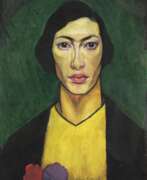

Nathan Isaiovych Altman (Russian: Натан Исаевич Альтман), a Ukrainian-born Russian and Soviet avant-garde artist, made significant contributions to Cubism, stage design, and book illustration. Born on December 22, 1889, in Vinnytsia, Ukraine, Altman's early education took place at the Odessa School of Art, followed by further studies at the Maria Vasilyeva Free Russian Academy in Paris. His diverse artistic talent extended across painting, sculpture, graphic art, and theatrical and cinema design, reflecting the dynamic spirit of the avant-garde movement.
Altman's work is recognized for its innovative approach to Cubism and for integrating avant-garde principles with traditional Jewish themes. This blend is evident in his Jewish graphic arts and his involvement in designing stage sets for the Habimah Theatre and the Jewish State Theatre in Moscow from 1920 to 1928. A notable period in his career was his participation in the Exposition Internationale des Arts Decoratifs et Industriels Modernes in Paris in 1925, showcasing his breadth in arts and design alongside contemporaries such as Aleksandra Ekster and Sonia Delaunay-Terk.
Altman's legacy is preserved in several prestigious collections, including the Museum of Russian Art in Erevan, Armenia, where his mixed technique works like "Still Life" are housed. His pieces reflect the avant-garde's fascination with abstract forms and bold experiments with color and composition. The Russian Museum's collection of Altman's work further highlights his versatility, featuring his self-portraits, the iconic "Portrait of Anna Akhmatova", and innovative designs for theatrical productions.
For collectors and experts in art and antiques, Altman's oeuvre offers a unique insight into the evolution of avant-garde art in the early 20th century. His works not only encapsulate the revolutionary spirit of the time but also embody the rich cultural interplay between Russian and Jewish artistic traditions.
To stay updated on Nathan Isaiovych Altman's art and to learn about new sales and auction events related to his work, signing up for updates is highly recommended. This subscription ensures you remain informed about opportunities to engage with the legacy of a pivotal figure in the avant-garde movement.
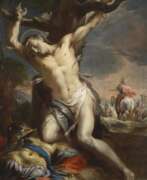

Martino Altomonte, born Johann Martin Hohenberg, was an Italian Baroque painter renowned for his artistic endeavors across Poland and Austria. With his roots in a family of artists, Altomonte honed his craft under the tutelage of Giovanni Battista Gaulli and Carlo Maratta in Rome, before making a significant name change and cultural shift to become a court painter in Poland under King John III Sobieski.
Martino Altomonte's oeuvre is marked by a vibrant blend of Neapolitan chiaroscuro and Venetian color, elements that distinguished his style from his contemporaries. This unique combination is particularly evident in his altarpieces and frescoes, which include major works like the ceiling frescoes in Vienna's Lower Belvedere and the high altarpiece at the Stiftskirche Wilhering. Despite the loss of many of his altarpieces, some key pieces survive, offering a glimpse into his dramatic yet harmonious approach.
Throughout his career, Martino Altomonte was deeply involved in the Viennese art scene, his works contributing significantly to the development of Baroque painting in the region. His legacy is continued by his son, Bartolomeo Altomonte, who also became a noted painter. Martino Altomonte's impact on Baroque painting, with his mastery of light and shadow, makes his work a continued point of study and appreciation among art collectors and historians.
For those interested in exploring the works and life of Martino Altomonte further, consider subscribing for updates on new product sales and auction events featuring this illustrious artist. Stay connected to the world of art and ensure you never miss an opportunity to own a piece of Baroque brilliance.
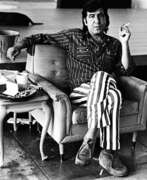

John Altoon was an American painter and representative of Abstract Expressionism. He was an important figure in Los Angeles art in the 1950s and 1960s.
He studied at the Otis Art Institute and simultaneously attended the Los Angeles Art Centre College of Design. Known for figurative works, he was a member of the Ferus group with Edward Kienholz and Robert Irwin. He suffered from schizophrenia from an early age and in fits of depression and paranoia destroyed some of his work.
